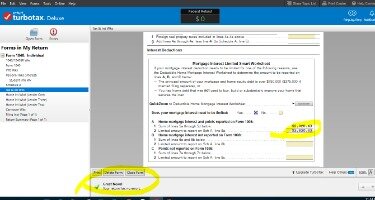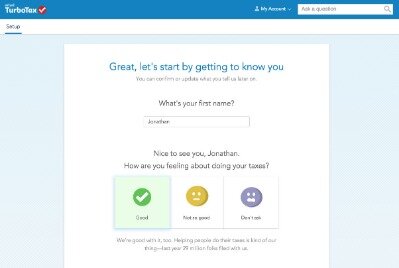Contents:


A double entry accounting that consistently pays its bills on time will likely have good relationships with its suppliers. This can benefit prospective suppliers interested in a steady supply of goods and materials towards negotiating favorable terms. Ending accounts payable is the balance of accounts payable at the end of a particular period, like the end of a month or year. Accounts payable are the amounts a company owes to its creditors for goods or services it has received but has yet to pay for.
What Is Days Sales Outstanding? – The Motley Fool
What Is Days Sales Outstanding?.
Posted: Thu, 06 Apr 2023 07:00:00 GMT [source]
The period of time between receiving an invoice and paying the invoice is calculated for the relevant document line item to provide accurate results. By calculating a quarterly DPO, you can compare your cash management across quarters to see any improvements or problems. The DPO formula is valid as long as the number of days in the multiplier is the same as the number of days over which COGS and average A/P are measured.
Days payable outstanding is a liquidity metric that measures how long a company takes to pay its suppliers. It is calculated by dividing the total amount of payable by the average daily cost of goods sold. A higher DPO indicates that a company is taking longer to pay its suppliers, which could be a sign of financial distress. Investors and analysts use DPO to measure a company’s liquidity and credit risk. This measures how many days a company takes to pay its suppliers.
How To Determine Your Optimal DPO
For example, a small business with a low DPO may want to look at internal processes to see where improvements can be made to improve short-term working capital. In many cases, it helps to determine payment frequency based on each vendor or supplier while keeping payment terms in mind. These costs are considered the cost of sales or cost of goods sold or COGS and are necessary to create the finished product. Once you have calculated average A/P and COGS, you’re ready to calculate DPO―divide average A/P by annual COGS, then multiply by 365 days. Only include suppliers from which you purchased inventory when calculating DPO―for example, exclude payables to a utility company. This means we can intuitively say that the ending inventory is the remaining inventory at the end, i.e. the products that haven’t been sold.
Killers of my son yet to be arrested 2 months after death — Onitsha widow laments – Vanguard
Killers of my son yet to be arrested 2 months after death — Onitsha widow laments.
Posted: Thu, 13 Apr 2023 18:40:35 GMT [source]
As a result, the company is able to free up more cash that it can use to pay operating expenses. A low DPO means the company pays its bills faster, which can be an indication that it’s not able to negotiate extended payment terms from its vendors. A company may choose to pay quickly in order to improve vendor relationships and qualify for early-payment incentives. Secondly, if the company’s DPO is less than the average DPO of the industry, then the company may consider increasing its days payable outstanding. But the organization should remember that doing this doesn’t cost them the vendor or any favorable benefits from the suppliers. Keeping these two things in mind, if a company can match up its DPO with the average DPO of the industry, the company would be able to use the cash flow for better use for a long period.
What Steps Should Businesses Take Looking to Either Shrink or Optimize Their Days Payable Outstanding?
DPO is a key factor in the company’s cash conversion cycle, which measures its ability to quickly convert resources into cash. Some companies determine DPO based on the AP balance at the end of the period, while others use the average balance during the period. For example, if a company has a DPO of 40 days, that means the company takes around 40 days to pay off its suppliers or vendors on average. The formula shows that DPO is calculated by dividing the total accounts payable by the money paid per day . To manufacture a salable product, a company needs raw material, utilities, and other resources. In terms of accounting practices, the accounts payable represents how much money the company owes to its supplier for purchases made on credit.
If your low DPO results from short payment terms, work with your suppliers to gain some flexibility. Even if you’ve had difficulty with payments in the past, as your overall financial situation improves, suppliers may be more willing to extend credit terms. Take time to find the average payment terms from your current suppliers. Ideally, your DPO should be a few days below the average repayment term across all suppliers. Generally, these periods differ due to businesses, vendors, and payable terms.

When combined these three measurements tell us how long between a cash payment to a vendor into a cash receipt from a customer. This is useful because it indicates how much cash a business must have to sustain itself. Using the formula above, calculate your average DPO based on your most recent balance sheet numbers.
This can be due to a number of factors such as strong negotiating power with vendors or a healthy cash flow. However, it is important to be aware of potential weaknesses that come with having a high DPO value. A low days payable outstanding is not as desirable, but it is not necessarily a bad thing. It could mean that the company is struggling financially and is unable to pay its suppliers on time. This could lead to supplier disputes and other financial problems.
This allows you to look at an industry average and see how a company measures up to the broader industry. When it comes to different debts and bills you have to pay, there can be different methods for calculating how long it can take to pay them off. It can sometimes depend on the specific bill, but knowing how long it will take can allow you to make better business decisions. Unlike DPO, days receivable partially relies on external forces . If you’re paying quickly as a matter of efficiency, be sure your prompt payment is rewarded with early payment discounts or other advantages.
Factors that affect Days Payable Outstanding Analysis
Before joining FSB, Eric worked as a freelance content writer with various digital marketing agencies in Australia, the United States, and the Philippines. For the beginning balance report, we should date our report as of December 31 of the previous year. If you click Customize, you can access more customization options, such as number formats, accounting method, and filters. Tim is a Certified QuickBooks Time Pro, QuickBooks ProAdvisor, and CPA with 25 years of experience. He brings his expertise to Fit Small Business’s accounting content.
- A high days payable outstanding is often desirable because a company that takes longer to pay its bills has more cash available for other purposes.
- For example, a small business with a low DPO may want to look at internal processes to see where improvements can be made to improve short-term working capital.
- The number of days debtors took to make the payment is computed by multiplying the fraction of accounts receivables to net credit sales with 365 days.
- It does not take into account the terms of payment agreed upon between the company and its creditors/suppliers.
- Accounts payable refers to the account representing a business’ obligations to pay off liabilities towards suppliers or vendors.
You can use the day’s payable outstanding calculator below to quickly evaluate the average days it takes for a company to pay its payable outstanding to its suppliers by entering the required numbers. Accounts payable refers to the account representing a business’ obligations to pay off liabilities towards suppliers or vendors. The value of AP is the price of goods or services that haven’t been paid by the company.
Step 1. Operating Assumptions
It’s important to always compare a company’s DPO to other companies in the same industry to see if that company is paying its invoices too quickly or too slowly. It may want to lengthen its payment periods to improve its cash flow as long as this doesn’t mean losing an early payment discount or hurting a vendor relationship. Days payable outstanding measures the total days a company takes to clear all accounts payable payments. However, DPO should not be too high as it can lead to bad supplier relationships. DPO values vary across organizations, as there are benefits to both paying in a timely manner and advantages to extending out your business’ accounts payable days. An organization’s ideal DPO depends on many factors including company size and industry standards, as well as cash flow needs and business priorities.
Big corporations are most likely to have connections and negotiation power with vendors so that they can have a better contract term. This can reduce the DPO figure to increase company evaluation. You have credit with a company or vendor and this is your balanced owed that is due for payment.
DPO provides a helpful view of cash liquidity, financial health, and other metrics like average inventory and annual revenue. The average DPO among the largest U.S. companies rose 7.6% in 2020 to more than 62 days; however, DPO varies widely by industry and by company. It’s sometimes possible to calculate DPO for public companies from data included in their financial statements. The retail giant reported accounts payable of approximately $55.3 billion and COGS of $429 billion for the fiscal year ending Jan. 31, 2022.
Companies that have a high DPO can delay making payments and use the available cash for short-term investments as well as to increase their working capital and free cash flow. Days payable outstanding computes the average number of days a company needs to pay its bills and obligations. Shorter DPO means you aren’t holding onto your cash, but also that you may be securing early payment discounts. Longer DPO can mean you end up paying late fees and compromising vendor relationships.

In some cases, you may even need vendors to serve as a reference for a new supplier you are trying to bring on. Additionally, today’s strained supply chains make it harder for businesses to receive the materials they need. A low DPO can help ensure that vendors will prioritize your company’s orders, amidst a market with dwindling resources.
Days Payable Outstanding Formula (DPO)
Not only does it help to improve cash flow and boost your bottom line, it further cements strong vendor relationships and encourages people to consistently refer your business. The answer to these questions begins with calculating your accounts payable days . This helps a business determine the state of its cash flow and approximately how long it’s taking to pay vendors back. The Days Payable Outstanding ratio shows the average number of days it takes a company to pay its own outstanding invoices. Increasing DPO improves working capital and increases free cash flow. Days payable outstanding reports how many days it takes to pay suppliers.

A low DPO figure generally implies that a business is paying its obligations too soon, since it is increasing its working capital investment. However, it may also mean that a firm is taking advantage of early payment discounts being offered by its suppliers. The savings implicit in most early payment terms can make early payment an extremely attractive option, justifying a low DPO figure.
- Although it’s generally in the company’s best interest to increase DPO, a company needs to weigh doing so against its market needs.
- Vendor relationships have become more important for organizations looking to scale their services.
- You can either take the value reported at the end of the period or you can take the average value of accounts payable.
- For the quarter April to June is $450,000, and for the quarter July to September is $500,000.
- This is a measurement of how many days it takes for a company to collect payments owed by its customers.
- In the above, over simplified example, we are assuming that Ted has to pay $100 in 10 days to his vendors and he will receive $100 from his customers in 5 days.
These restrictions only end up costing your company more money in the long run, and creates tension in the relationship you have with the vendor. Days payable outstanding measures the average number of days from when a company purchases inventory and materials from the supplier until it’s paid. The DPO calculation divides average accounts payable (A/P) by annual cost of goods sold times 365 days. Bookkeepers should monitor the DPO as part of their A/P management and to guard against vendors being paid either too slowly or too quickly.



